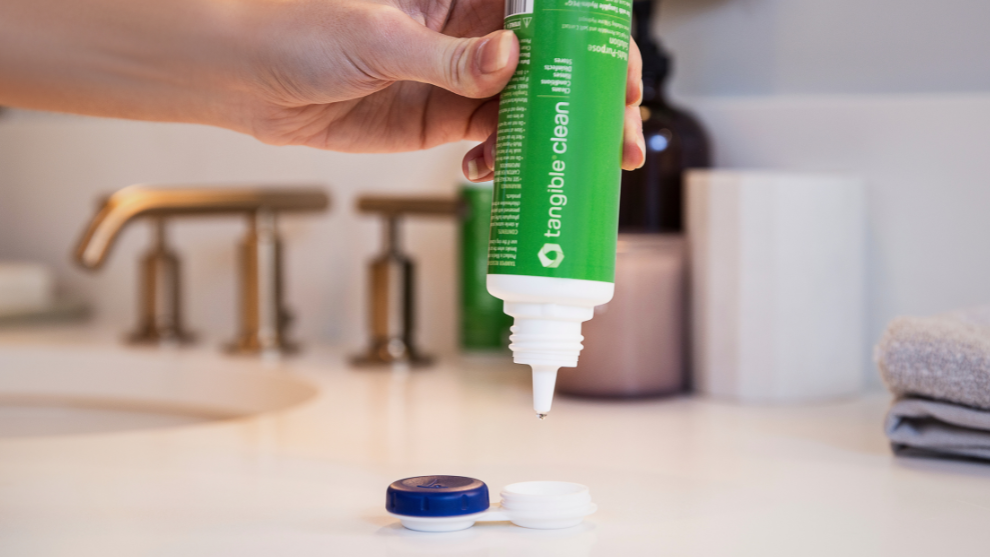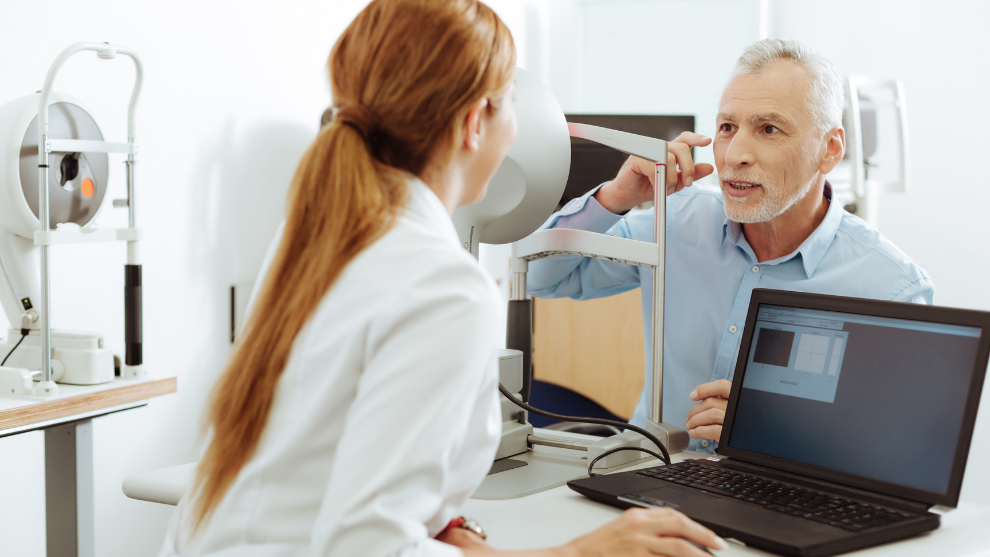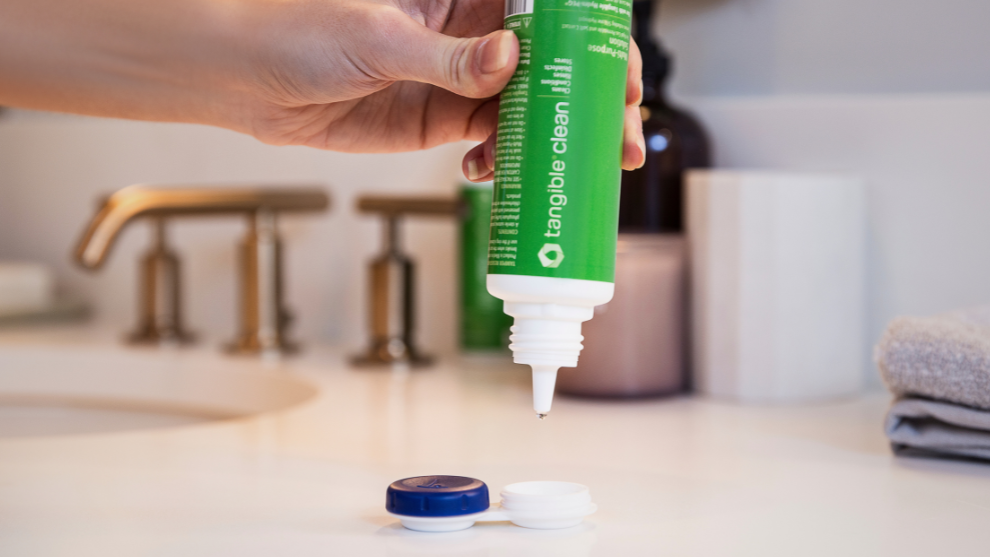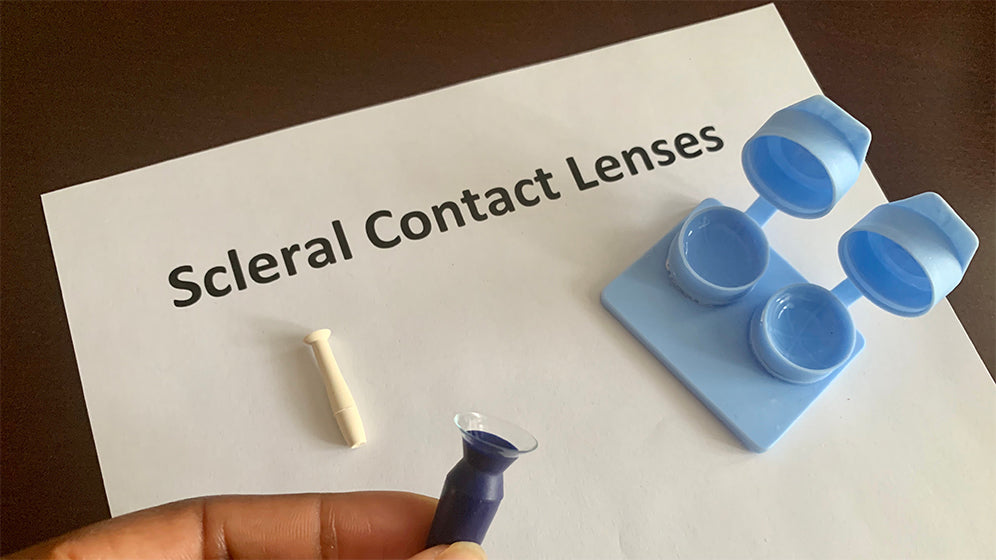Now that you have made it home with your scleral lenses, it’s time to care for them. Pretty simple, right? Wrong. Caring for your scleral lenses can get rather complicated. The solutions you may need are not always available in stores and it’s hard to know what is approved and not approved if your doctor didn’t specifically tell you about it during your visits. Let’s face it, this process can be intimidating even for a seasoned wearer. Let’s see if we can make this a little less complicated!
Filling Solutions- Used to fill up your lens when you insert it
Use ONLY preservative free saline. This is a crucial part of the efficacy of your scleral lens treatment. Whatever you put into your lens to insert it stays there; a widely used benefit of scleral lenses! However, it can also pose a concern if the wrong product is used. Exposing your cornea to even a mild preservative for a long period of time can be toxic causing irritation and reduced wear time.
What’s the difference between buffered and non-buffered?
Buffered saline solutions have additives that raise the pH to match the pH of the natural tear. Many people find them to add more comfort and that their lenses fog less which can lead to more stable vision. Buffered salines include Scleralfil and Purilens. Nutrifil is a buffered filling solution that is also enriched with electrolytes for added corneal health.
Unbuffered saline solution is more acidic which means the ph is slightly lower than that of the natural tear. It is made up of sodium chloride and purified water with no added ingredients and many patients have great success with it. Non-buffered salines include Lacripure and Addipak.
Is single use or multi-use bottles better?
Single use ampules of saline are typically considered to be more sterile since they are used and discarded. Multi-use saline, like Purilens, seems like a good idea for patients who don’t use the entire single use ampule and feel like they are being wasteful to discard it. However, multi-use saline comes with its own very important considerations. First, it must be discarded 14 days after opening, regardless of how much is left in the bottle. And, the lid must be kept tightly closed at all times when not in use.
Pro-Tip: Saline can be used for filling and rinsing lenses but not for storing lenses.
Cleaning and Disinfection
This can vary from patient to patient and from doctor to doctor. The non-negotiable that all eye care providers agree on is that cleaning and disinfection must be done daily or after each use.
What’s the difference between cleaning and disinfecting?
Cleaning your lenses is the process to remove debris from the lens surface. This is typically done by rubbing your lenses in the palm of your hand with an approved MPS or cleaning solution. Studies have shown that rubbing lenses while cleaning to be more effective in removing debris and deposits and to ensure optimal ocular health.
Disinfection means you are sterilizing your lenses to prepare them for the next day’s wear. This is done by soaking them in an approved MPS or in a peroxide solution, like Clear Care.
You can think of it like cleaning food off of a plate before placing it in the dishwasher.
Pro-Tip: Rinsing with saline or an approved MPS is usually recommended after peroxide disinfection. For a more in depth breakdown on tips for multipurpose and peroxide cleaners, check out our Eye Health article here.
How do I choose the right regimen?
Your doctor should recommend the care system they prefer you to use. If they give you the choice, you might try both options (MPS and Peroxide) separately for a week each. Note if you feel more or less comfort, how much time it takes to perform each regimen, any differences in your mid-day and end of day comfort, and the cost and availability of each solution. Many patients use a combination of both systems.
What CAN’T I use?
If you have lenses coated with Tangible Hydra-PEG, you must avoid any solution that contains alcohol and use only solutions approved for use with Hydra-PEG. Non-approved solutions may damage the coating. If you are unsure if you have coated lenses, ask your eye care provider.
Pro-Tip: Learn why Tangible Hydra-PEG might be the game-changer you’ve been looking for
Rinsing Solutions
Rinsing your lenses seems like an afterthought but it is actually an important part of caring for your lenses and comfortable wear.
When should I rinse?
You should rinse your lenses during the cleaning process, after you have rubbed them. Many patients like to rinse their lenses after they have disinfected them, prior to insertion. This is especially true if use a more viscous MPS, like Boston Simplus, or a peroxide disinfection.
If you drop a lens while handling them, rinse it before inserting it or continuing your cleaning regimen.
If you must remove your lenses due to fogging, you should rinse them before you reinsert.
Pro-Tip: Remove, Rinse, Refill, Reinsert
Should I use my saline to rinse?
Yes, you can use your preservative free saline to rinse your lenses. You can also use a multi-purpose solution or an approved MPS.
Never use tap water to rinse your lenses! The CDC strongly advises against this and all Eye Care Practitioners adhere to their recommendations. https://www.cdc.gov/contactlenses/water-and-contact-lenses.html#:~:text=Water%20can%20cause%20soft%20contact,water%20is%20not%20germ%2Dfree
Rewetting Drops - Small but Mighty!
Scleral lenses are little miracle workers! But, they do their best work when they stay moist. Many scleral lens patients have some type of Ocular Surface Disease like Dry Eye or MGD. Using a drop several times per day can give a little added moisture that can add a lot of comfort and hours of wearing time.
There are so many drops available! Is there really a big difference?
Yes! Even though there are many rewetting drops available with contact lens indications, sticking with preservative free is generally better. Look for PE on the box.
Can I use rewetting drops with my lenses in?
Yes! In fact, it is recommended!
Pro-Tip: Some rewetting drops, even PF, are thicker and will cause some temporary blur if used with your lenses in. If the box says “gel” or “night time”, it is probably a more viscous drop and you might like it better when you use it without your lenses, right before bed.
*Always consult your doctor before changing any part of the recommended care regimen or products.




0 comments